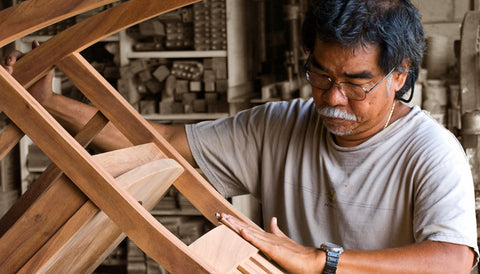Why Koa Wood Furniture is Better Than any other Wood Furniture?

For instance, Koa wood is a better choice than Mango wood for building furniture.
While both types of wood are natural, Mango has a darker color and is slightly harder than Koa. While this may not be important for most woodworkers, it is significant if you plan to use your furniture for years and want to make sure that it stays beautiful.
The background of Koa in Hawaii
In the Hawaiian islands, the koa tree was cultivated for centuries. It was a valuable resource to islanders, who used the wood for furniture and carving. It was also used to build a variety of tools and weapons.
After a time, the tree was introduced to the United States as a timber source. It became popular with furnituremakers and coachbuilders, and was hailed for its beautiful figure and colors.
Today, the koa tree is still cultivated, but in a more restricted way than it was in the past. It is no longer a common sight in Hawaiian forests and is now harvested only on conservation land.
The most valuable parts of the koa tree are the heartwood and the thin sapwood. The heartwood possesses a swirled appearance that is sometimes described as lustrous marble.
It is primarily reddish brown to dark brown and occasionally carries colorful tones of gold, black and deep purple. It is the only wood with such a range of colors and is prized by both woodworkers and musicians alike.
There are a number of reasons why Koa is considered by some to be the most beautiful hardwood in the world. Some of them include its unique chatoyancy (the ability to reflect light) and the range of colors it possesses.
Koa has a wide variety of grains and tones that are unique in the world, making it an excellent choice for detailed carved wood art.
One of the most appealing aspects of koa wood is its chatoyancy, which is the ability to reflect light and create an optical illusion. This is due to the tight grain pattern that is present in koa and the resulting appearance of a three-dimensional surface.
Using a high-quality wood veneer can be a cost-effective way to add the dimensional beauty of koa to any design. Veneers can be made in different styles and are often used to highlight specific areas of a design, such as the top or bottom of a table.
Another great benefit of koa veneer is the ability to change the look of the furniture piece without losing the strength and durability of the original wood. This feature makes koa veneer an excellent alternative to other solid woods, such as mahogany and walnut.
The dimensional beauty of koa can also be seen in the many contrasting grain patterns that appear within the wood. These variations of the same grain patterns can make it easier to find a style that works well with your decor and taste.
The contrasting grain patterns and varying tones of koa wood can be especially appealing to luthiers, who use the varying tonewoods to achieve an outstanding sound. Instruments crafted from koa are favored by some of the finest luthiers in the world, and they can command premium prices.
